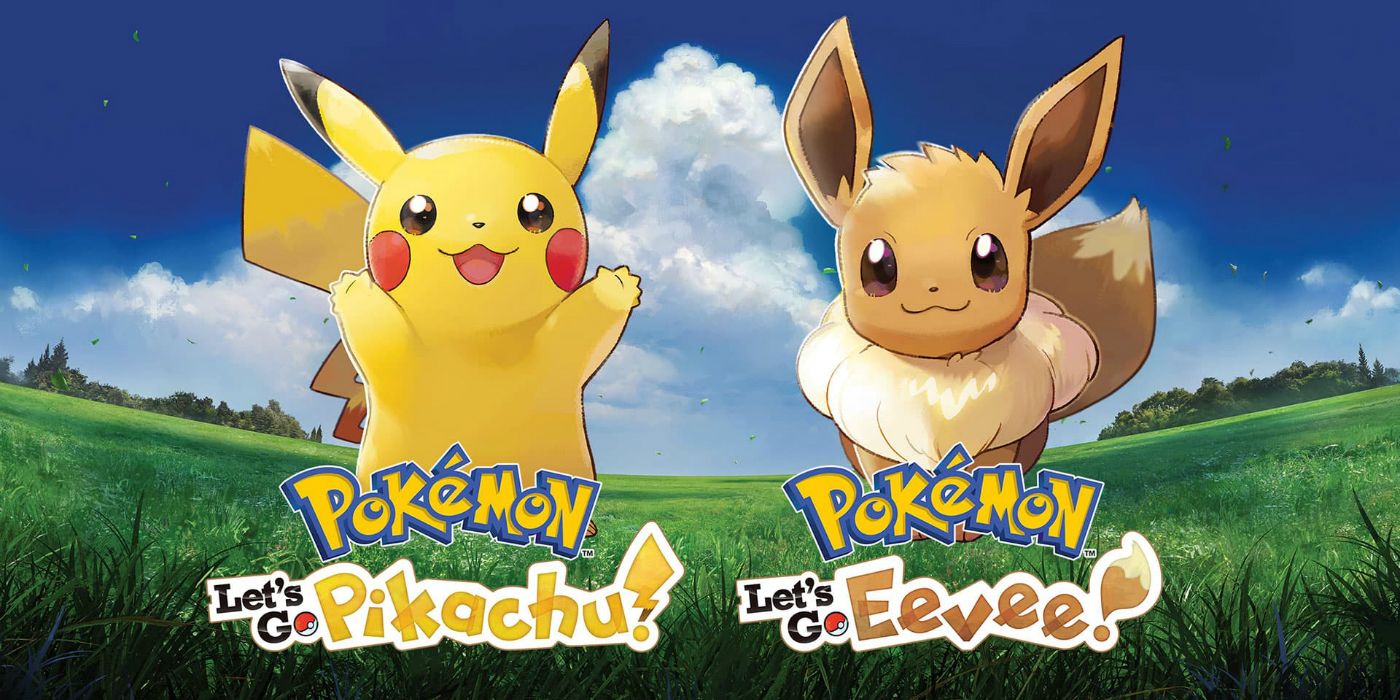
Pokemon: Let's Go, Pikachu! and Let's Go, Eevee! have had their critics from the very beginning. As soon as Pokemon: Let's Go was revealed earlier this year, skeptics emerged, stating that simplified gameplay based around the Pokemon GO mobile title would inevitably reduce the quality of the series. In theory, the cynics certainly had a leg to stand on - Pokemon is a game that appeals to both young and old fans alike, and has possessed remarkable depth in gameplay for decades now, hidden under the surface for those who want to make the game into something more competitive and grindy.
In practice however, Pokemon: Let's Go, Pikachu! and Let's Go, Eevee! are triumphs of a modern age that is less interested in repetition for hours on end and instead wants some more light-hearted fare. Pokemon: Let's Go is obviously meant to bridge the gap between those familiar with the series only through Pokemon GO and those who have already journeyed throughout the various regions of Pokemon handheld titles in the past, and it succeeds marvelously, with most of its simplified systems actually producing better gameplay experiences than they have achieved in the past.
Related: How To Get Bulbasaur, Charmander, & Squirtle in Pokemon Let's Go Eevee and Pikachu
Pokemon: Let's Go is still a classic core Pokemon game at heart. Trainers start with either Pikachu or Eevee and then proceed to journey throughout Kanto to collect eight badges and defeat the Elite Four. For the most part, Pokemon: Let's Go also sticks to the script of Pokemon Yellow, which featured characters from the anime and interpretations of the gym leaders and more that also changed based on how they were presented on television. The game also acknowledges that this isn't the first time someone has adventured through Kanto to become a Pokemon Master, occasionally making nods to trainers like Blue and Red while also including more recent characters from Alola and more. It's a nice marriage of all the previous Pokemon journeys, and it's packed with subtle references for long-time Pokemon fans.
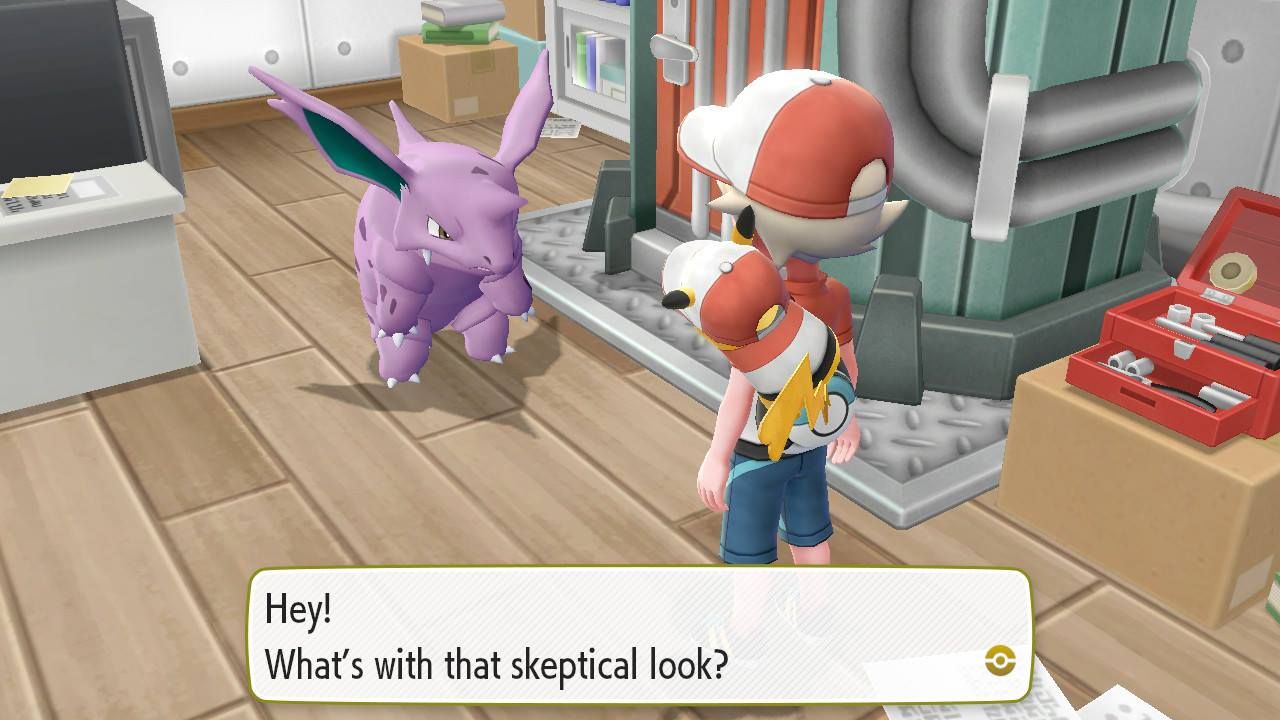
The biggest change, of course, is the one that Game Freak made to the Pokemon catching system. Pokemon: Let's Go shifts random battles to be entirely about catching a Pokemon rather than weakening them through combat, adopting the Pokemon GO style of timing a player's Pokeball throws and using items to calm their target. For the most part, this is a surprisingly welcome change. Pokemon appear on the world map, so players don't run into a bunch of Zubats every time they're wandering through a cave if they don't want to. Your entire team of Pokemon earns experience for catching a wild Pokemon, and that experience is influenced by how well you do it - if you used the Joy-Cons, for instance, you get a bigger bonus for good throws because it is more difficult, and you get bonuses for first-time catches, size of the Pokemon, and others.
What that system really does is drastically reduce the grind of the game and make it easier for newcomers. It's hard to be under-leveled, or to have one Pokemon become drastically stronger than the rest of the team because a new player is using it too much in battle, because experience is both easy to come by and spread out well. The new catching experience system definitely smooths the game out in unexpected ways.
It's not without its issues, of course. The frustration typically stems from how the game labels the wild Pokemon as you attempt to catch them in Pokemon: Let's Go. Yellow rings, which indicate a mostly-easy target, sometimes take ten tries while red rings, which represent the most difficult targets, sometimes take one. That's obviously an RNG element and its fine, but its amplified by choosing to use different Pokeballs - in our experience, Ultra Balls, the best you can find, still vary wildly on targets, a frustrating experiencing because they are more expensive and feel like they should be more consistent than they are.
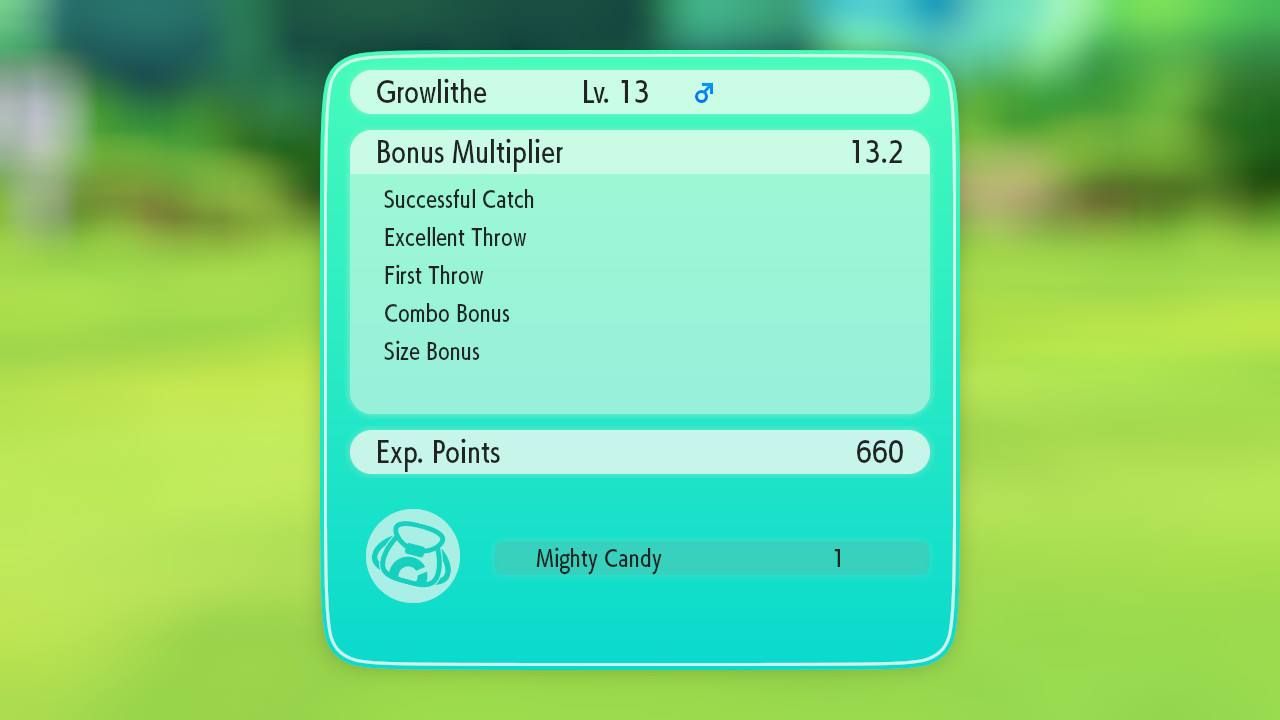
That being said, trainers will never be in danger of running out of Pokeballs, as the game is very generous with providing them and every trainer battled produces a hefty sum of money once defeated.
Using the Joy-Cons can be a bit of a wild ride, too, and makes up some of the issues that keep Pokemon: Let's Go from being established as one of the very best entries in the series. There's no one thing in particular that makes the controls cumbersome - just a variety of small issues, like Joy-Con-specific prompts that are easy to miss or weird angling issues because of the camera. Playing the game in handheld mode is preferable for those who enjoy consistency, but then you miss out on some of the mechanics that are only available for those using the Joy-Con, which feels a little unfair in a game that's meant to be so friendly.
For those worried about battling, those concerns were entirely unfounded. The game preserves the bulk of the battle system that has made Pokemon so famous, and even adds a few little tweaks that make it more fun. Your partner Pikachu or Eevee can sometimes give your entire team a boost with the shake of a Joy-Con, or otherwise dodge an attack because you've cared for them well. Pokemon: Let's Go also adds some unique moves to the game that are specific to the player's partner of choice, and these moves make battle fascinating while also creating a tiny, overpowered juggernaut out of Pikachu or Eevee. Early in Let's Go, Pikachu!, for instance, Pikachu can learn an Electric-type Quick Attack variant that has base damage of 50 and always criticals. The move is patently absurd early in the game, allowing players to steamroll any trainer without much effort.
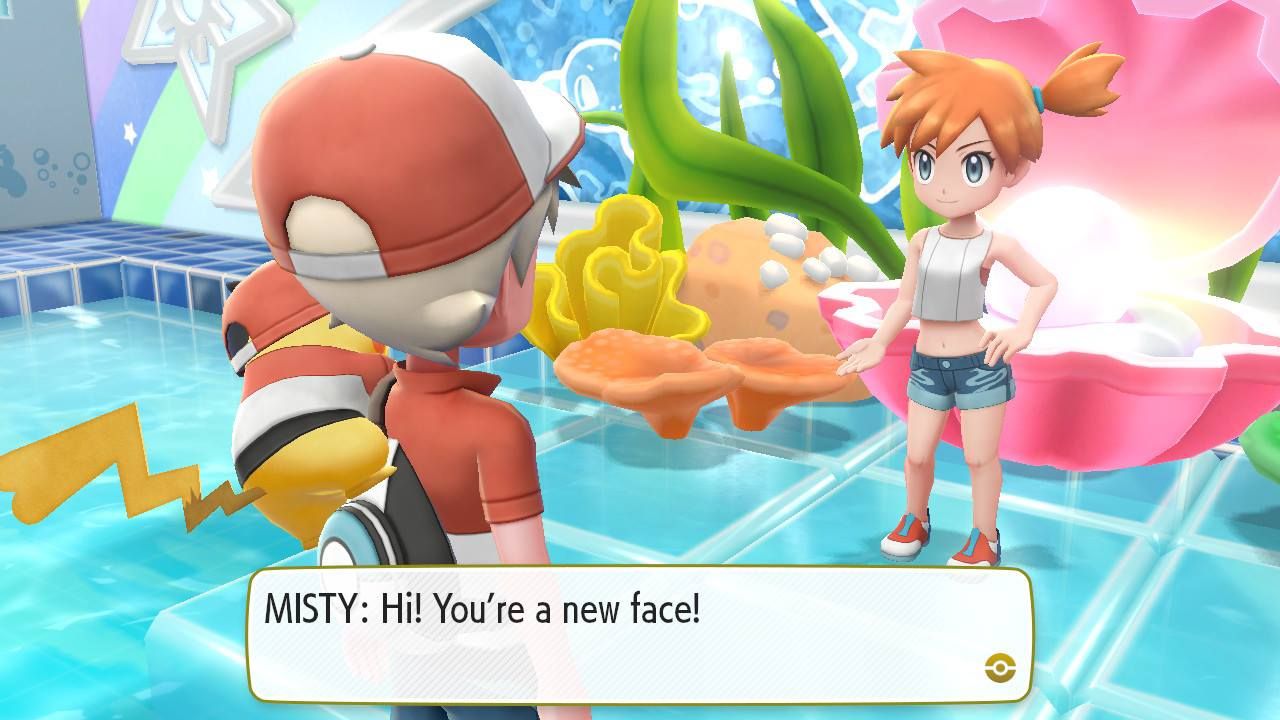
Luckily, if you don't want to play that way, you don't have to. The regular catch, train, and battle cycle of Pokemon games past is preserved here, and bringing a balanced team to a fight is still priority number one, even though Pikachu can learn Flying- and Water-type moves along the way to help mitigate some of its shortcomings. Just be advised that in Pokemon: Let's Go, battle has been massively simplified in one way - super effective attacks are super effective. It's rare that they don't one-shot an opponent, but the same is true for the player's team, so be extra vigilant with typing matchups as the game progresses.
Naturally, simplifying everything does create a game that is rather easy, and does hurt the replayability or post-game fun that Pokemon games are typically known for. Players can also feed their Pokemon candies (another system taken from Pokemon GO) that strengthen them, and oh boy, do they ever - a Pokemon squad on its way to the Elite Four feels like something out of an elite assassination task force if they've been given a bunch of candies. It's broken, but it's also a cool system, especially because obtaining candies can be done through sending excess Pokemon to Professor Oak, who will then produce Pokemon-specific candies that boost them even more. If you want to train your Growlithe, for instance, then catching a bunch of extra Growlithes makes sense, as you'll eventually get sent candies that makes yours way stronger.
Some of the simplistic changes are actually just way better than the main games, though, especially when it comes to organizing Pokemon. Players have access to all of their Pokemon from the in-game menu at any time - no more finding a PC and sorting through boxes. You can also carry a menagerie of Pokemon with you at any time, meaning sending unwanted ones to Professor Oak doesn't become an issue of managing space, but rather just getting rid of extras. It's amazing, one of the best features a Pokemon title has had in a while, and should immediately be adopted for all other Pokemon titles.
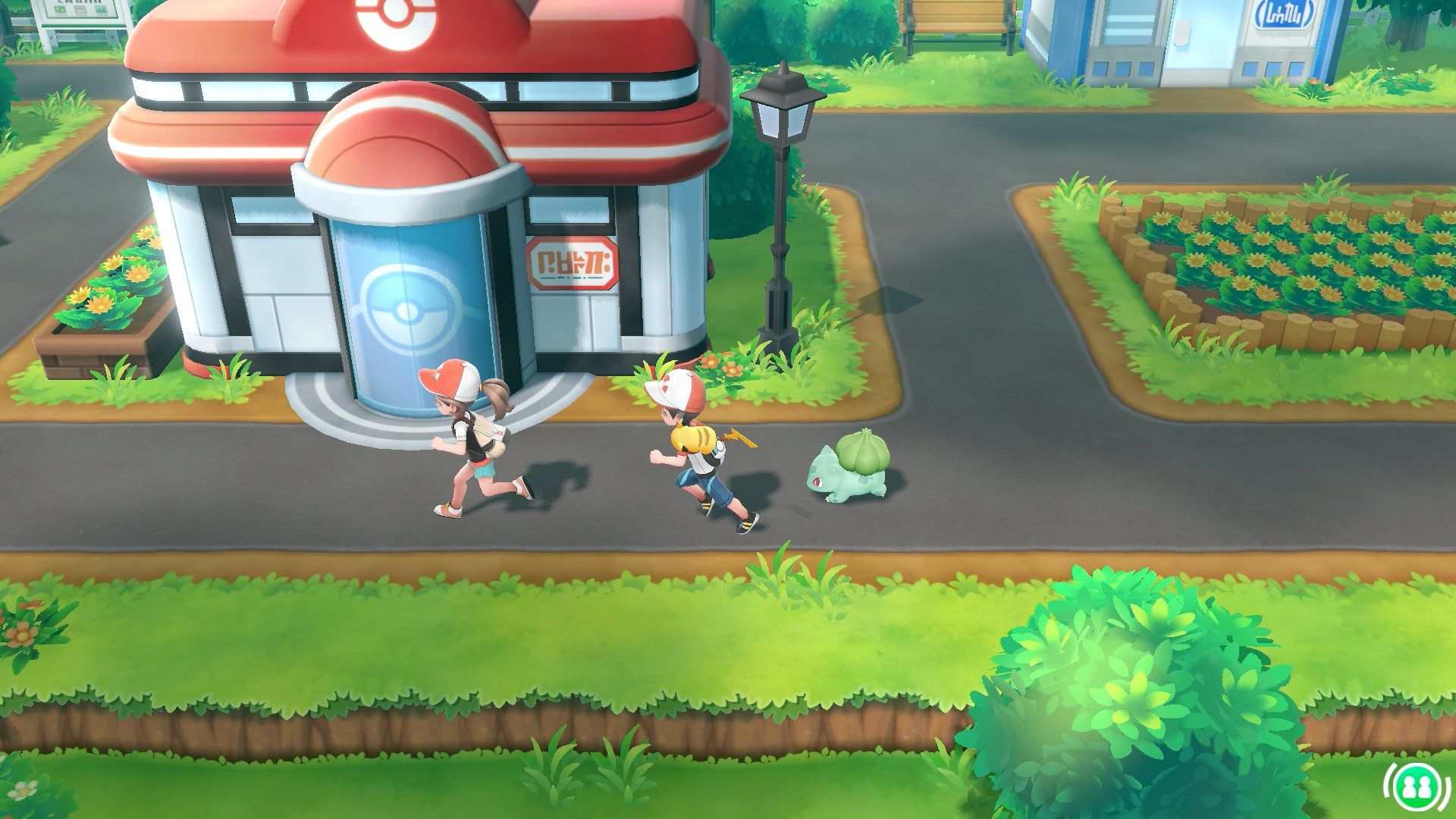
Even the partner system is adorable and fun, rather than an annoyance or hindrance in any way. Checking in on Pikachu or Eevee is a blast, as they'll often have something to say or do about it, ranging from imitating famous characters to an attempted prank on the player. Pikachu and Eevee have personalities, and these have been emphasized in Pokemon: Let's Go, so much so that its easy to feel genuine affection for your partner. That's not an easy thing to accomplish from a design standpoint, and it's a welcome spot of wholesomeness in an industry that too often has exceptionally grim outlooks on our future.
That's ultimately what players will find in Pokemon: Let's Go, too - a break from responsibility, duty, or work. Even the grinding in the game doesn't really feel like it's a slog, and everything else is bright, colorful, and fun. Pokemon: Let's Go hits a pitch-perfect note between Pokemon GO and the main series of games that came before it, creating the kind of accessible Pokemon entry that would be just as easy to get your grandma or young niece or nephew to play as it would be a VGC fanatic who regularly attends offline tournaments. There's magic to be had in Pokemon: Let's Go, and we'll look back on it in a few years as one of the most unique, fun entries into the franchise ever, let alone on the Nintendo Switch.
More: Pokemon Let's Go Eevee and Pikachu: How To Get Mew
Pokemon: Let's Go, Pikachu! and Let's Go, Eevee! are out now on the Nintendo Switch for $59.99. Screen Rant was provided a digital game code for review.
from ScreenRant - Feed https://ift.tt/2PA1lQJ

0 Comments